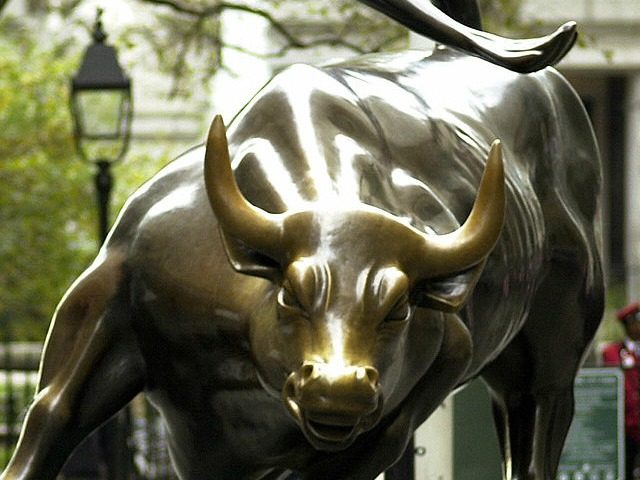The bull market has a lot more room to run. With the Trump Administration and GOP Congress deconstructing investment-killing business regulations and aiming to cut taxes, the economy is poised to grow faster, and new technologies will support higher valuations over the next several years
Supporting prospects for bigger profits, the energy and manufacturing sectors are becoming more efficient. With oil prices recovering to the low $50 range, oil and gas drilling has increased significantly since May. And manufacturing is posting more gains—to supply that industry and others—despite a stronger dollar.
Consumer spending remains robust and private investment appears to be picking up. A mismatch in the availability of housing—more starter homes are needed than are available for interested buyers—will power up new home construction. Overall, the economy is expected to grow at 2.4 percent this year as compared to 1.9 in 2016, and corporate profits for the S&P 500, which encompasses about 80 percent of the U.S. equity market, are expected to rise significantly this year.
All this is powered forward by conditions in China—both economic and new efforts for Beijing to exert more social control—which are driving money out of the country despite government controls. Along with Europe still only accomplishing moderate growth and Brexit casting a pale over European unity, America remains the best place for investors to place their bets.
Bonds remain an unattractive alternative to stocks—long yields remain low. Even with the Federal Reserve pushing up the fed funds rate 0.5 to 0.75 percentage points this year, the rush of foreign capital into U.S. markets will likely keep rates long rates low—as it did when Ben Bernanke pushed up short rates in 2004 – 2006.
At the same time, sustainable price-earnings ratios for stocks are rising and U.S. equities are cheaper than they look.
In this century, new value creation is premised much more on intellectual property—for example, computer apps that create companies like Uber and artificial intelligence that power the robotics revolution—and less on hard assets—in particular, industrial buildings and factory equipment. This trend greatly reduces the amount of financial capital businesses need to create new and better products—the foundations of American wealth and higher equity valuations.
Consider that Google was launched with only $25 million in 1999 and grew into a $23 billion enterprise at its initial public offering five years later—the story is repeated at ventures like Facebook, Snapchat and many others.
Similarly, as industrial era enterprises like Ford and IBM rely more on software to create value in products sold and innovations like 3D printers and flexible robots make machinery investments more versatile and productive, the demand for private capital to finance expensive purchases of physical assets becomes more limited.
This is an important reason why established companies are flush with cash. They simply need to spend less on hardware to improve the efficiency of production and responsiveness of supply chains, update and expand product offerings and launch new ventures.
Lower capital requirements coupled with an abundance of capital, thanks to foreign funds coming into America, are pushing down the expected rate of profit needed to attract funds into equity investments.
In turn, that pushes up price-earnings (P/E) ratios that markets can sustain—even if political turmoil at home and abroad creates wider fluctuations in stock prices.
The S&P 500 Index is currently trading above 2350 with a P/E ratio approaching 27. However, factoring in expected profit growth over the next 12 months, Factset estimates the P/E ratio falls to about 18.
That’s well below its 25 year average of 25.
Assessed against alternative investments and history, and given how much more efficiently digital technologies permit businesses to create wealth using investors’ cash, stocks are hardly overvalued.
A P/E ratio approaching 35 is reasonable. Coupled with the expected growth in profits, that could easily push the S&P Index to 3200 over the next two or three years.
Peter Morici is an economist and business professor at the University of Maryland, and a national columnist.

COMMENTS
Please let us know if you're having issues with commenting.